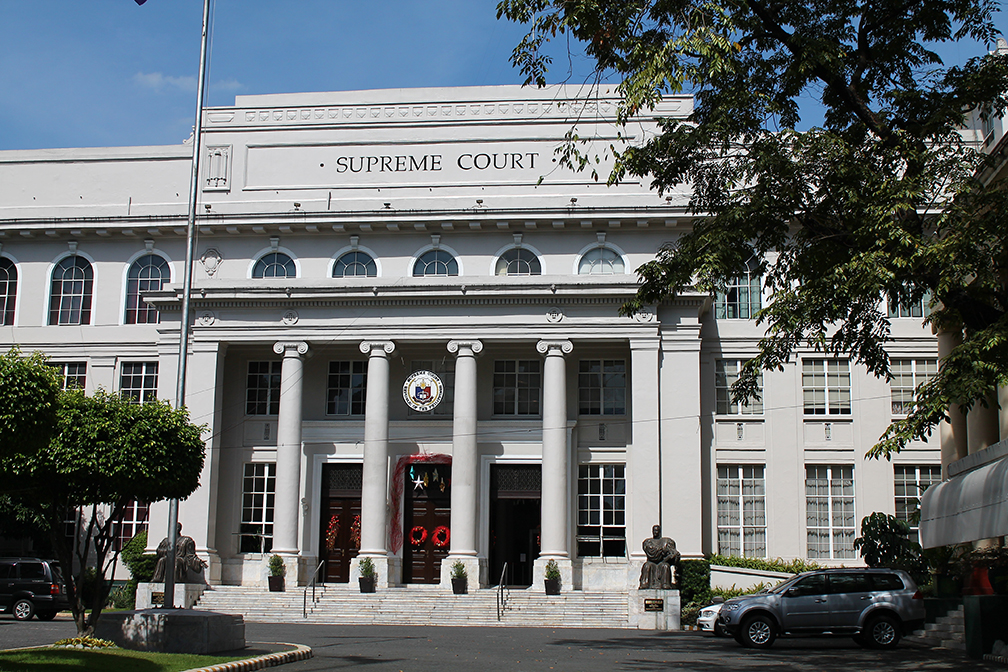
THE Supreme Court has cleared two members of the Tau Gamma Phi Fraternity of any involvement in the fatal hazing of an 18-year-old college student in 2009.
In a 26-page decision penned by Associate Justice Henri Jean Paul Inting, the Court’s Third Division reversed and set aside the ruling issued by the Court of Appeals in August 2016, which affirmed the decision of the Regional Trial Court (RTC) of Imus, Cavite convicting the petitioners Carlos Paulo Bartolome and Joel Bandalan for violation of Section 4 (a) of Republic Act 8049 or the Anti-Hazing Law of 1995 in connection with the death of John Daniel Samparada during his initiation rites to be admitted into the fraternity.
The two were sentenced by the trial court to a jail term of reclusion perpetua and were ordered to pay the heirs of the deceased P50,000 each for indemnity for the death and P100,000 as temperate damages.
However, the SC said based on its review of the case, there was no direct evidence to link the petitioner to Samparada’s death and that the two were convicted based on circumstantial evidence.
While admitting that hazing is usually committed in secret and under conditions where concealment is highly probable, limiting the prosecution to presentation of circumstantial evidence to prove it, the SC noted that the circumstantial evidence presented against the petitioner were insufficient to convict them.
“After a careful review of the case and the body of evidence adduced before the RTC, the Court is not convinced that petitioners are guilty beyond reasonable doubt of the offense of hazing.
“Thus, the Court resolves to reverse the appealed decision and acquit petitioners,” the Court said.
The Court held that the prosecution failed to establish the elements of hazing under RA 8049 such as having an initiation rite or practice as a prerequisite for admission into membership in a fraternity, sorority or organization; that there must be a recruit, neophyte or applicant of the fraternity, sorority or organization; and that the recruit, neophyte or applicant is placed in some embarrassing or humiliating situations such as forcing him or her to do menial, silly, foolish and other similar tasks or activities or otherwise subjecting him or her to physical or psychological suffering or injury.
The Court held that the prosecution did not present evidence to prove that hazing actually took place to establish the first element of the offense.
The second element was also absent considering that nobody testified that Samparada was a recruit, neophyte, or applicant of Tau Gamma Phi Fraternity.
With the prosecution’s failure to prove the presence of the second element of hazing, the Court said that the absence of the third element became readily apparent.
Based on the prosecution’s evidence, the Silang Municipal Police Station received a call from the Estrella Hospital on October 22, 2009, that an alleged hazing victim, later identified as Samparada, was brought to their hospital.
During investigation, it was learned that Bartolome, Bandalan and a third unidentified male person brought Samparada, a college student from the Lyceum of the Philippines in Cavite, to the hospital.
Based on what was recovered from the petitioners, including a document that bore the name of Tau Gamma Phi Fraternity, markings connected with the organization, and the handwritten name of Bartolome, the police concluded that they are members of the said fraternity.
The petitioners said they were forced to admit their participation in inflicting injuries on Samparada that led to his death during an interrogation by the police. Bartolome and Bandalan claimed that they were actually in the house of a certain Ivan Marquez for night swimming when the incident occurred.
They recounted that Marquez introduced Samparada to them and then they left to buy provisions.
When they returned to Marquez’s house, Samparada all of a sudden fell to the floor, hit his head on the pavement, and complained of difficulty in breathing. The petitioners then brought him to Estrella Hospital.

